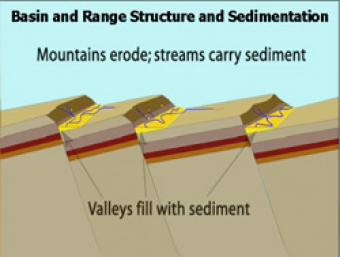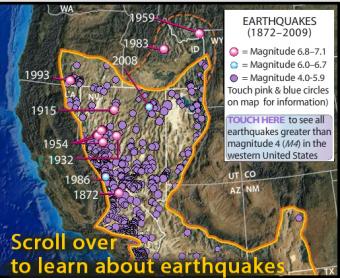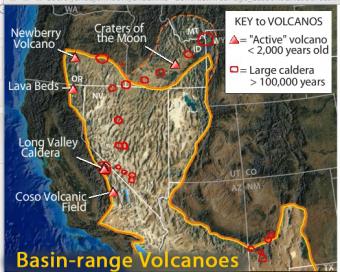
How can we know that basin-range extension is ongoing?
Extension of the Basin and Range Province is obvious as witnessed by the parallel mountains and ranges that define the region. Precise GPS measurements show that ongoing extension can be monitored. In the U.S. scientists have discovered that most of the extension is occurring on the western quarter of the region.

Over most of the last 30 million years, movement of hot mantle beneath the region caused the surface to dome up and then partially collapse under its own weight, as it pulled apart. Currently, there is very little actual stretching going on, and the small amount is concentrated on the Western and Eastern edges of the Basin and Range.

During Basin & Range extension, the plates pull apart, the mantle rises and melts due to lower pressures near the surface. The style of eruption depends on how long the magma sits in the crust and undergoes processes such as crystallization and melting and assimilation of wall rock.

Cross section of the shallow crust in the Basin & Range. Earthquake produces seismic waves that bump an array of seismic stations. One station records the arrival of the seismic waves on a seismogram.

As extension and uplift occur, erosion and sedimentation happen simultaneously but at slower rates. As extension slows down, erosion and sedimentation can overcome mountain building.

Interactive map reveals seismology, geology, and geologic history of the midwest.
(IRIS is going to discontinue Flash animations in 2020)

Long Valley Caldera area has had a history of eruptions and earthquake swarms. Learn more with this interactive map that reveals geology, eruptions, earthquakes, and more.

This interactive map of the Basin and Range Province reveals earthquakes, faults, hazards, volcanoes, mines, and National Parks.

This interactive map of the Basin-Range Province reveals information about the youngest volcanic features associated with the region.